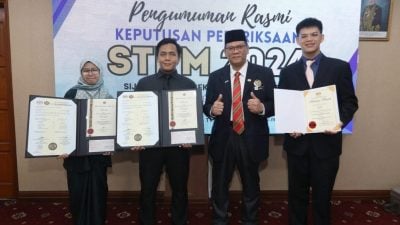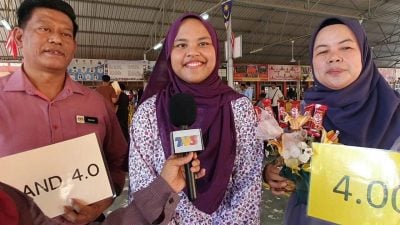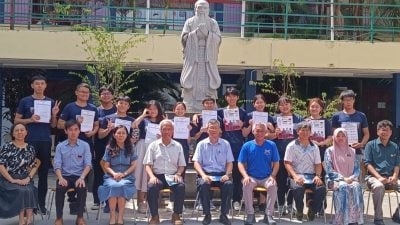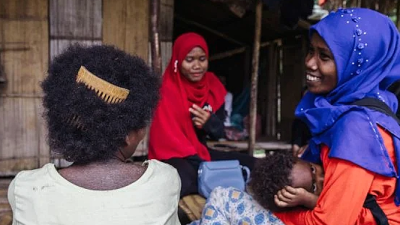
KUALA LUMPUR: A law student shares her path of becoming a Universiti Malaya student with STPM results, describing herself as a lucky survivor under the system.
Bo Chi Chian, also known as Bobo, made a video recounting her path on her Facebook page following a frontpage report by Sin Chew Daily on the extremely low number of Chinese students who have managed to enter Universiti Malaya and Universiti Kebangsaan Malaysia for popular courses such as medicine, dentistry, pharmacy, law and accountancy with their STPM results in recent years.
Traditionally, applying to a local university with STPM results is the only way to enter local universities, but over the years, the channel has increased to three.
Besides STPM, a student with excellent SPM results can also apply for one-year matriculation and then enter university at a faster pace than STPM student, seen as a “secured” path for many as only 10 percent of seats are allocated to non-bumiputra students.
The last channel is called a direct intake where a student recruited under such scheme has to tuition fees equivalent to private universities.
In many cases, when a student’s application is rejected, he can apply under a direct intake, seen as a second chance to enter a local university especially for popular courses which are expensive such as medicine.
Like many of her peers, Bo, who scored 12As in SPM, was aiming for a place in matriculation but her application was not successful.
Still aiming to enter a local university, she opted to study Form Six and sat for STPM, and finally made her way into Universiti Malaya.
Only after she was in the university did she discover the differences.
“Matriculation students enter university earlier than STPM students as the course is only one year while STPM is a one-and-a half-year course.
“Then, STPM student have to wait for another nine months to enter the university,” she said.
“Isn’t this a great disadvantage to STPM students who spend longer time to enter a university?” she asked.
For years, local universities charging affordable tuition fees take in students based on an allocation system among public universities.
To maximize the chances for Chinese students to enter local universities, a group of students have since 1989 compiled and analyzed scores required to apply for the courses to be shared among the students.
The voluntary group focuses on guiding students in applying for courses based on the scores, family background, family income and STPM results.
The group also collects data from Chinese students who have been successful in their application.
“Many students have depended on the data from the group to enter university,” she said, adding that the group is seen as “savior” to these students.
She also said ministers could have completed their university education with the help of the voluntary group.
In recent years, another channel has been created for universities to recruit students.
The direct intake scheme offers profit and financial resources much needed by the university but in a way, the allocation of places for STPM students is reduced further, she said.
Citing an example, she said the course may offer 60 students but some could be allocated for direct intake and the seats left for STPM students would be even smaller in number.
Over the years, the number of Chinese students entering local universities via STPM to study popular courses is getting smaller but the figures are never released in public.
Bo feels that it is not difficult to get a place in a local university but not for popular courses.
One could apply for five popular courses and not even get one.
“It is not about the overall percentage of Chinese student intake but whether one gets to study a course he or she wants in local university. This is also the sore point of students who opted for STPM.”
Top students with outstanding curricular activities who speak good English often end up being recruited by matriculation program or offered scholarships by private universities, she said.
“Poor students of all ethnic groups with average results suffer as they lack the financial resources to attend tuition classes and have to work part-time to earn some money. They do not have time to study.
“The government may want to help the poor, but those with limited resources are the ones who suffer under such system, in the name of recruiting those who deliver the best performance,” she said.
ADVERTISEMENT
ADVERTISEMENT








































